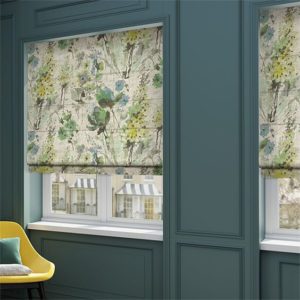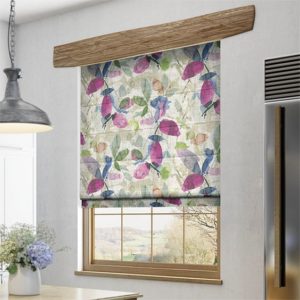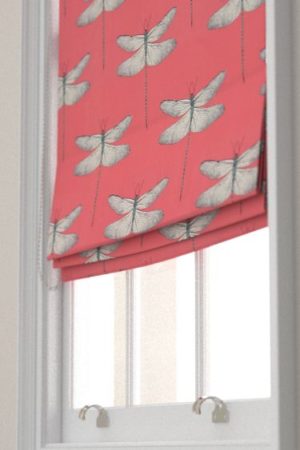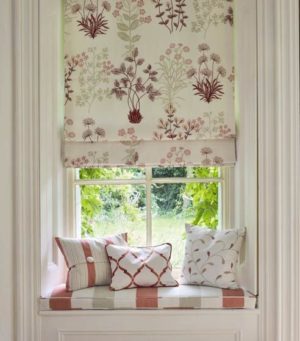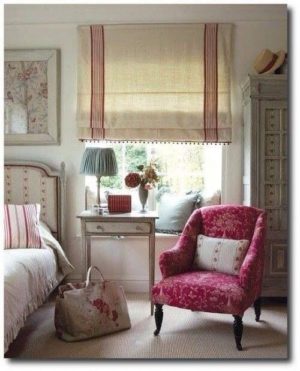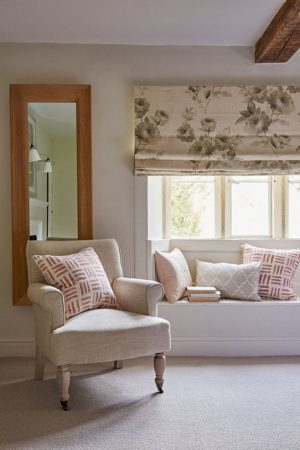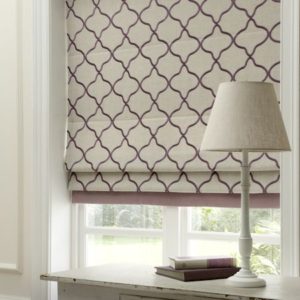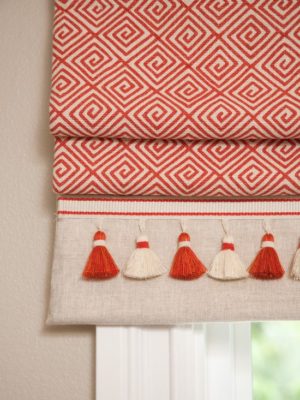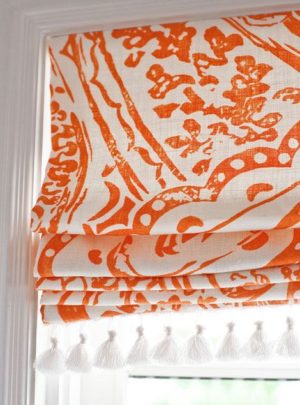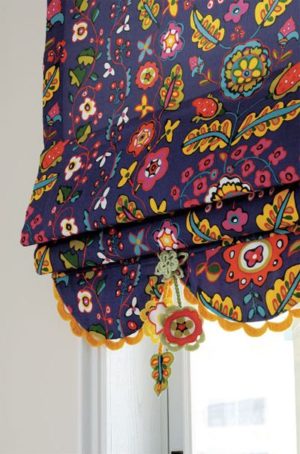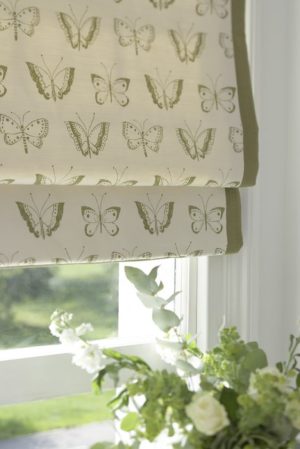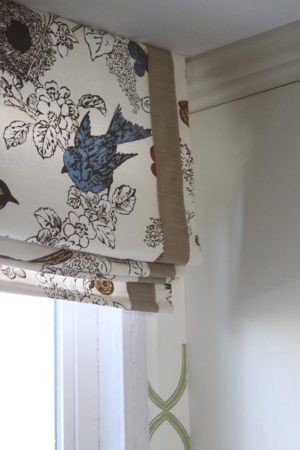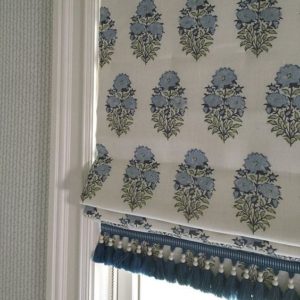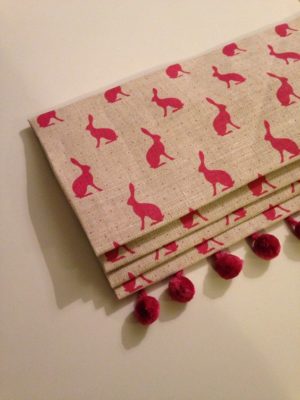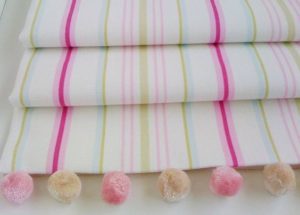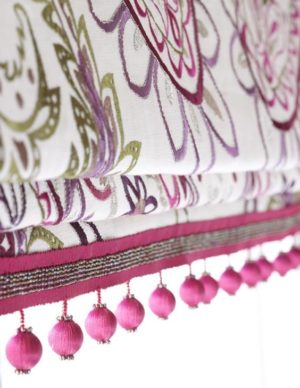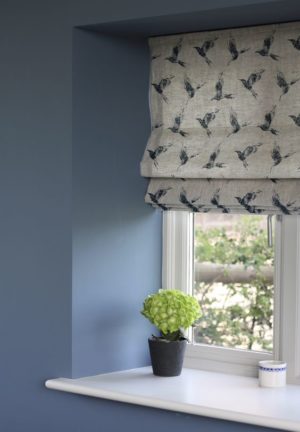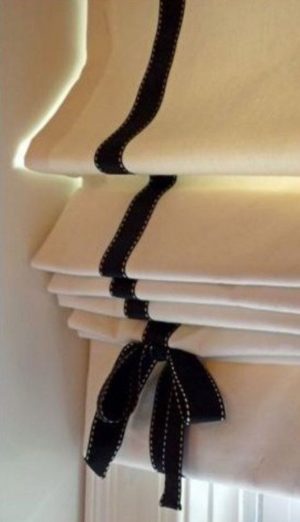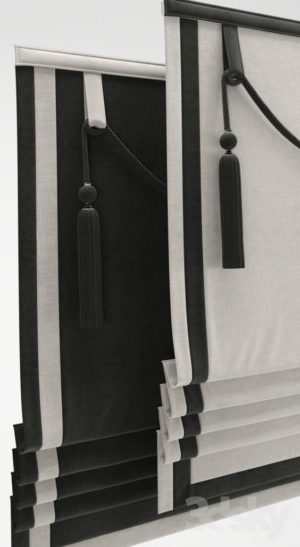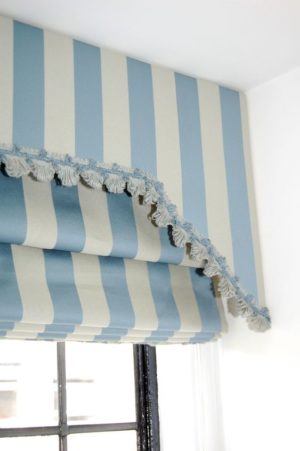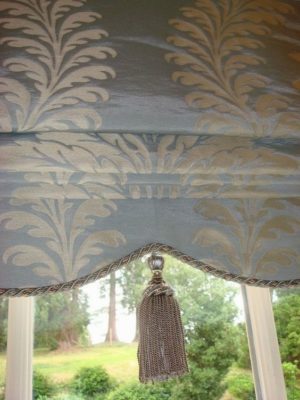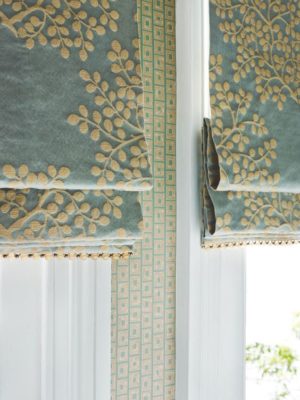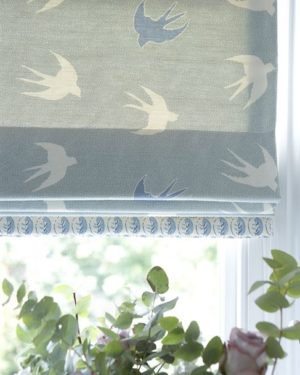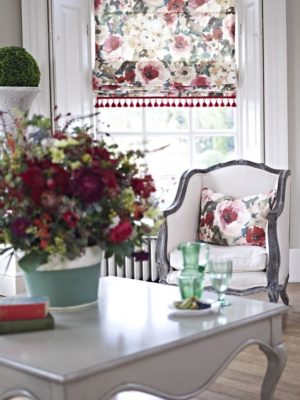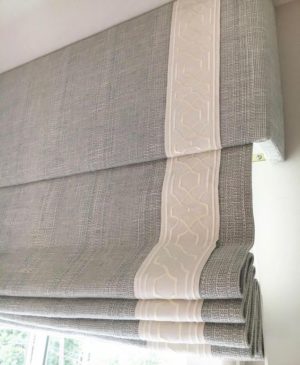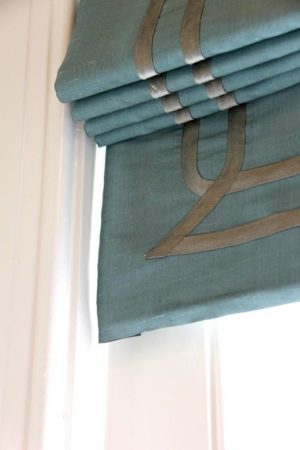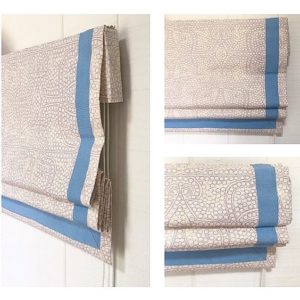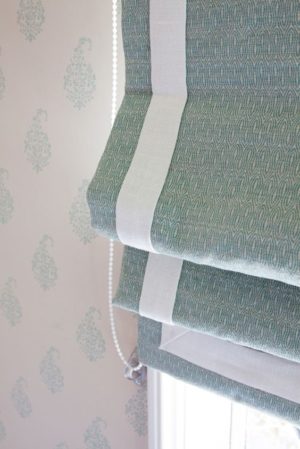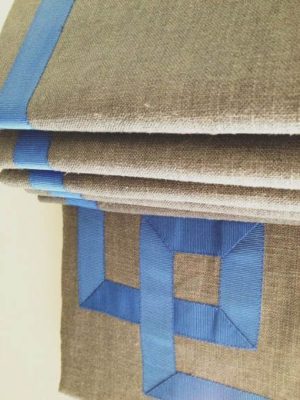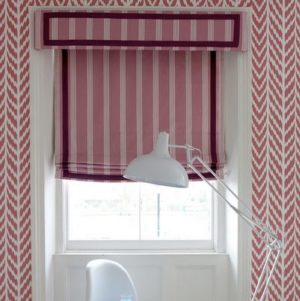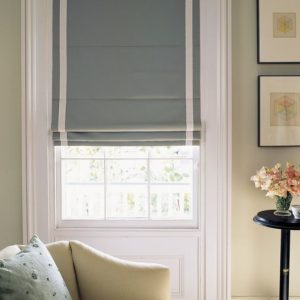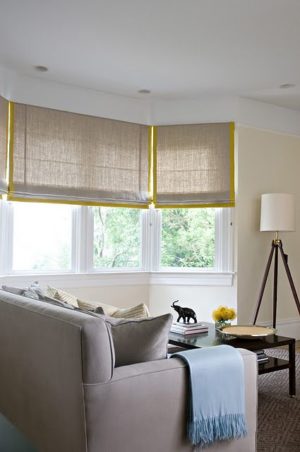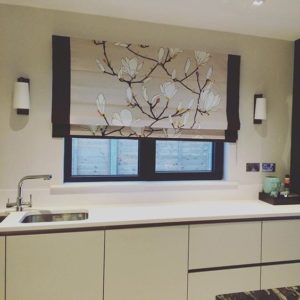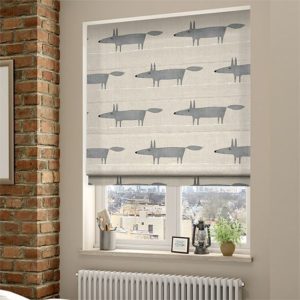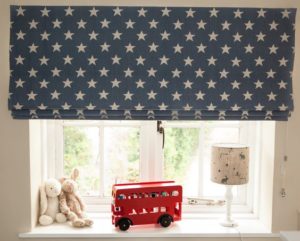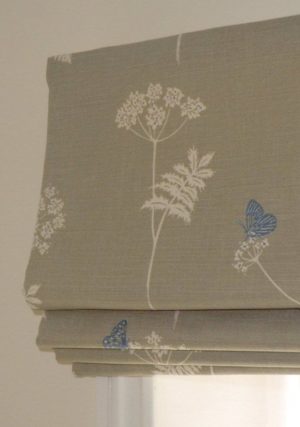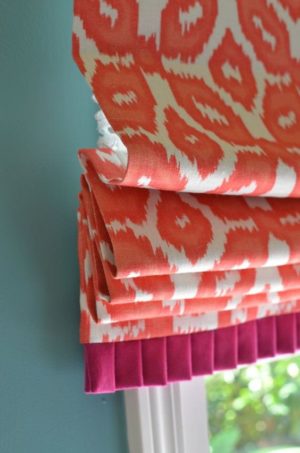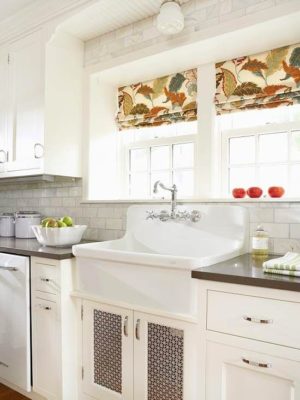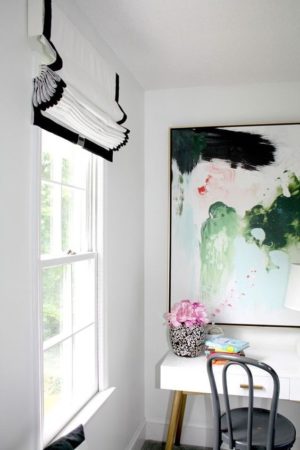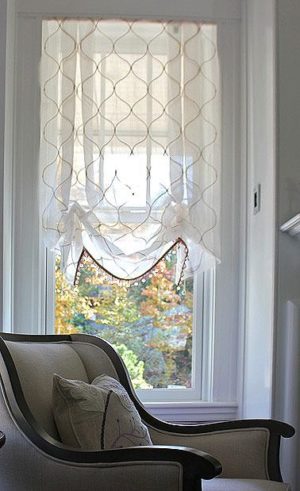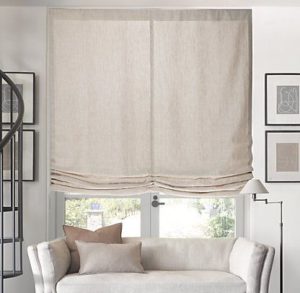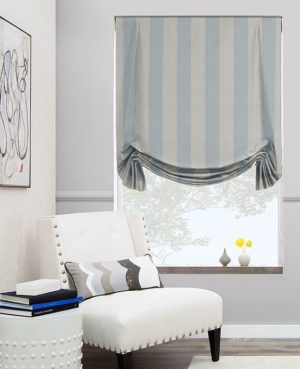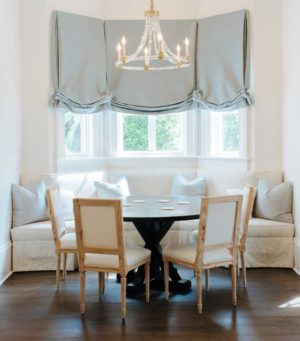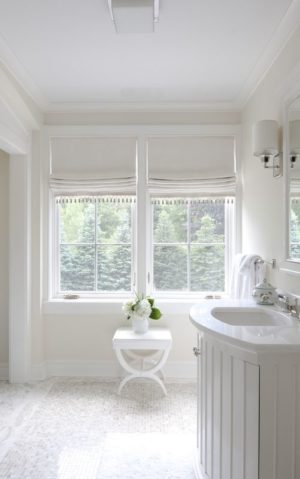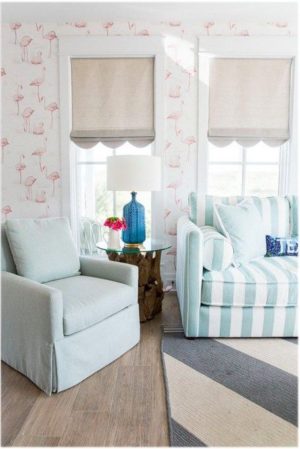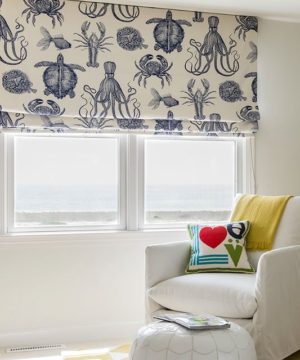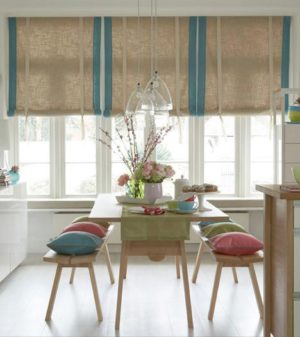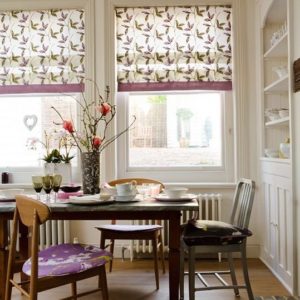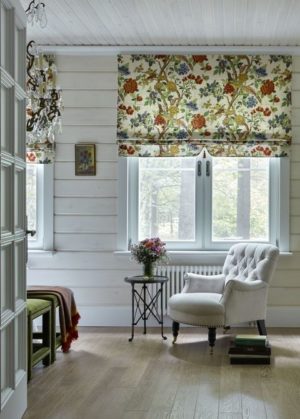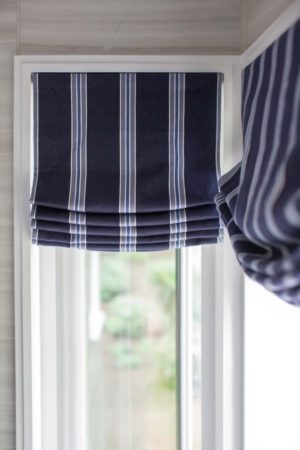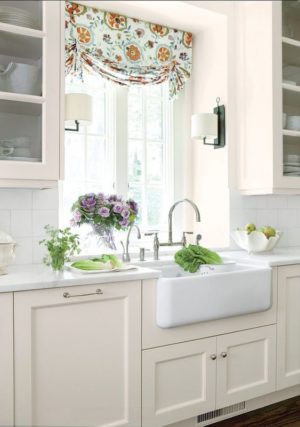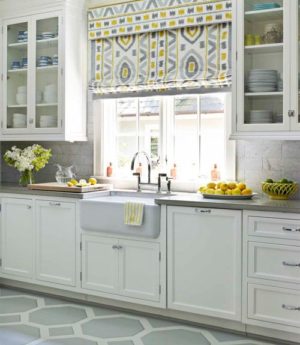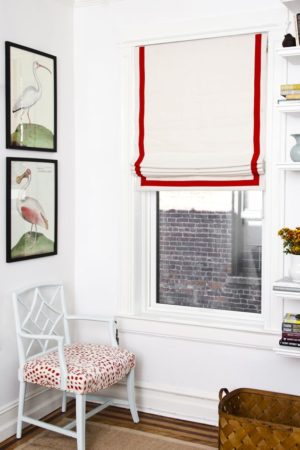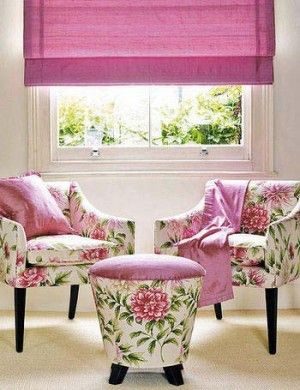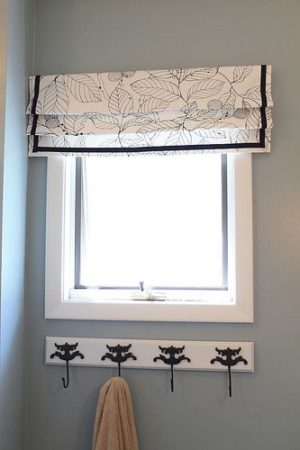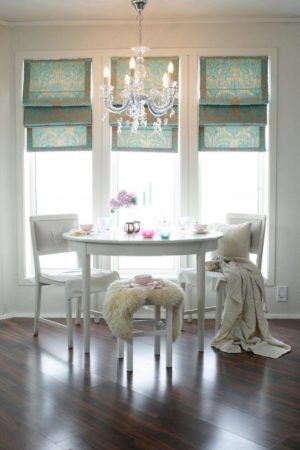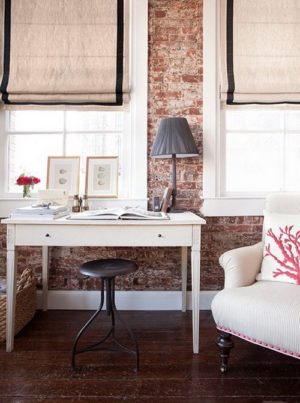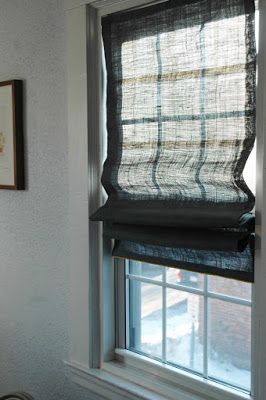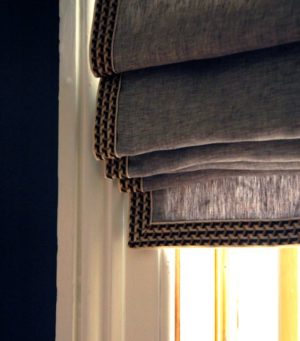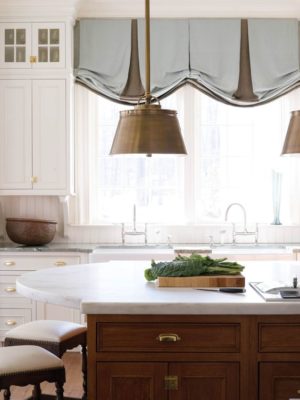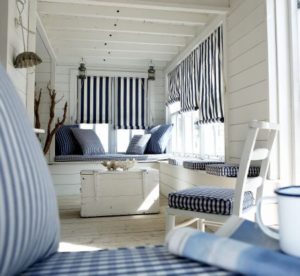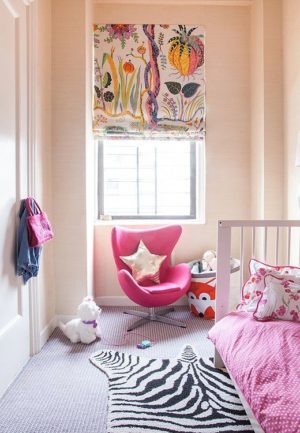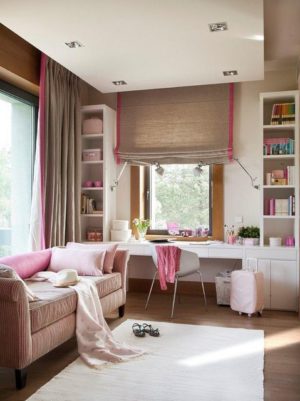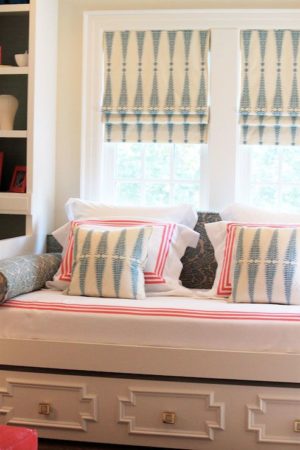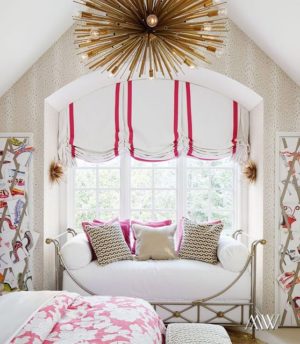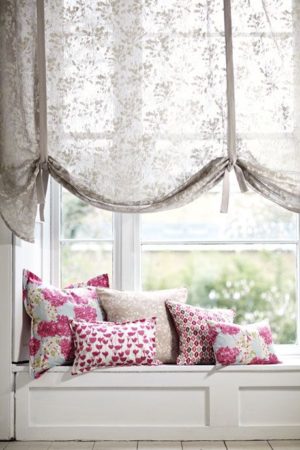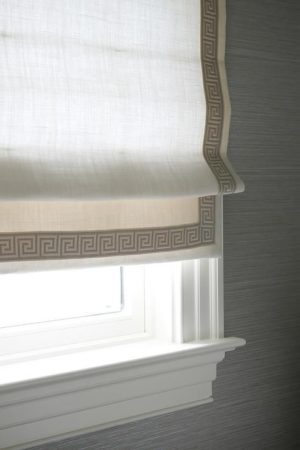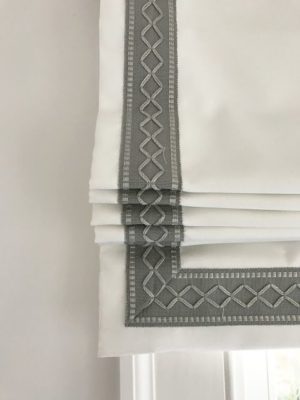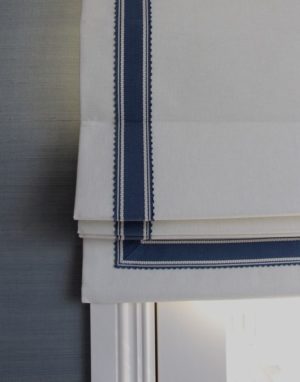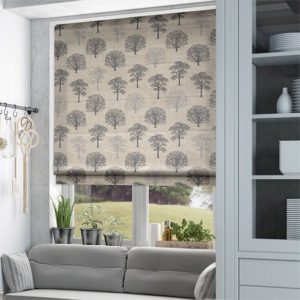If you want to uniquely decorate the windows in the house, it is advisable to choose curtains with a unique design. Having mastered the simple basics of arts and crafts, you can quickly make Roman curtains with your own hands. Step-by-step instructions will greatly simplify the creation of a beautiful decoration for the window.
- How to sew Roman blinds with your own hands: simple ways
- How to make Roman blinds according to the correct measurements
- How to make Roman blinds with your own hands without sewing: a detailed master class
- How to make a frameless Roman blind yourself
- The subtleties of tailoring a Roman blind
- How beautiful to decorate a Roman blind
- Weighty reasons for self-creation of roll-type curtains
- Photo gallery - do-it-yourself Roman curtains
- Video
A great alternative to traditional-looking curtains or blinds can be roll-type sun protection systems. The most functional Roman blinds are the perfect frame for interior paintings in any stylistic design genre. They perfectly regulate the level of illumination of rooms with natural light and reliably protect from moonlight.
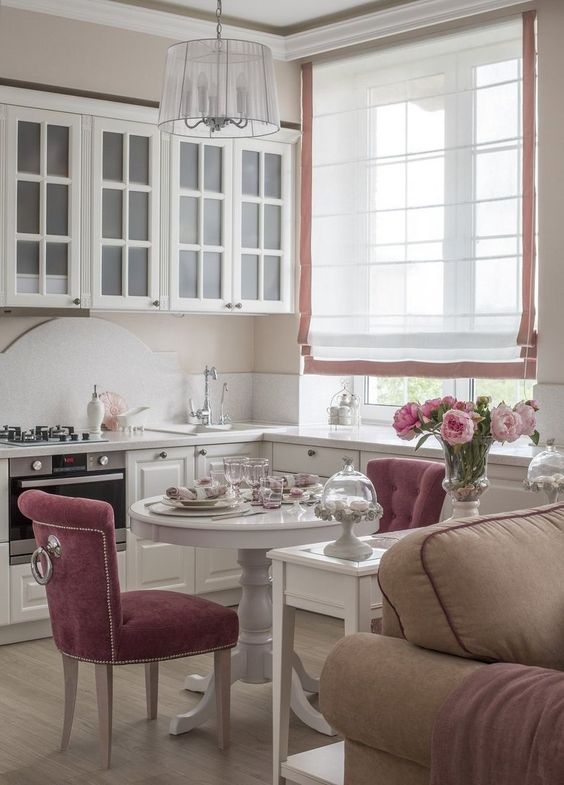
Roman blinds perfectly regulate the level of illumination of rooms
Easy-to-manage designs with a fabric base occupy a minimum of space around the perimeter of window openings. Due to their small size and simple geometric shape in the form of a rectangle, any novice needlewoman or innovative designer can design them. Before you make Roman blinds with your own hands, you need to study in detail their design features and control mechanism. This will help create an absolutely safe decoration for the window.
back to index ↑How to sew Roman blinds with your own hands: simple ways
Having decided to decorate the interior with home-made roll-type light protection systems, it is important to choose the desired type of curtains:
- Classic look ascetic due to the correct geometric shape of a perfectly even fabric base. When folded, they form rectilinear folds of the same size thanks to the rigid cords sewn in from the wrong side.
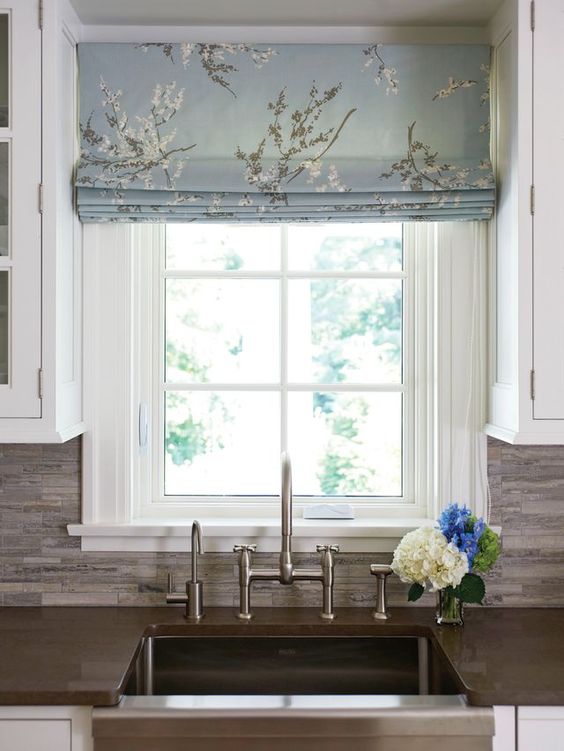
Laconic classic roller blinds
- Cascading looks great in open and folded position. Using wide tapes with a dense base, the fabric around the entire perimeter of the cut must be sewn in the area of \u200b\u200bthe folds at the same distance. On the window, they create the appearance of a multi-tiered drapery.
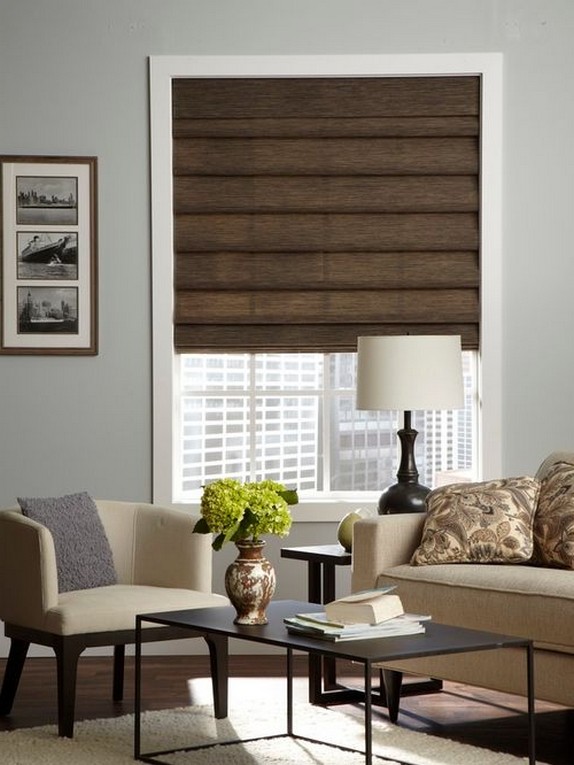
Cascading roman blinds with puffy pleats
- Frameless imitate the appearance of an arched pickup. Their elegant appearance is due to their simple design. The fabric cut is equipped on the sides with rings, thin cords or chains. When the canvas is raised, undulating folds are formed. Due to the lack of the need to sew rigid strips or ribbons to the fabric base, it is easiest to make frameless Roman blinds with your own hands. A step-by-step instruction with a detailed description of the sewing process will allow you to cope with this simple task in a few hours.
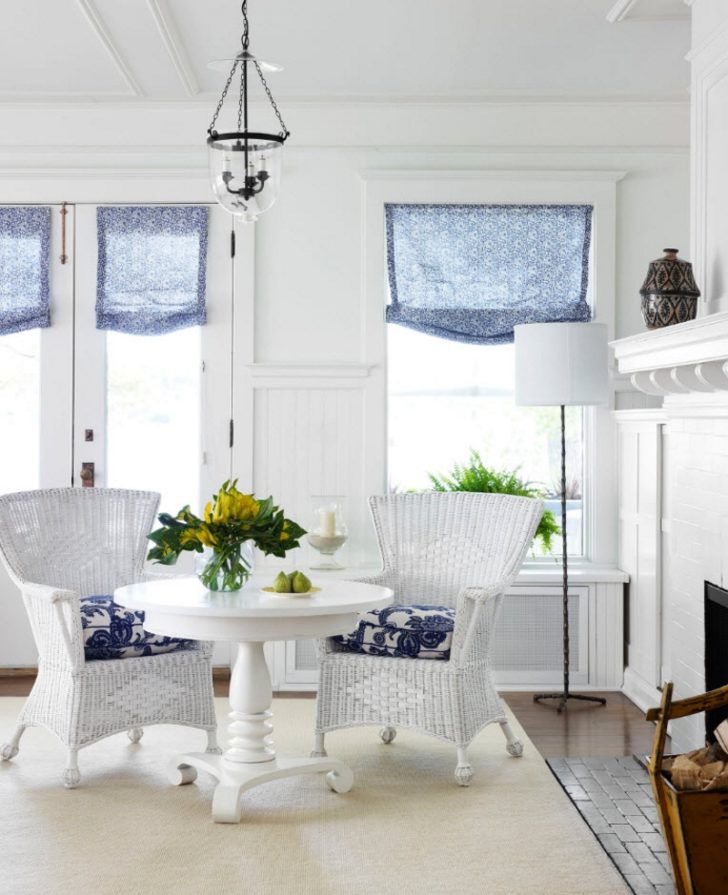
Do-it-yourself frameless Roman blinds
In the absence of the skill of working with a sewing machine, it is rational to choose an easier method. An elementary way to create an exclusive window design is to use horizontal blinds in the form of a frame. The appearance of the lamellas is absolutely unimportant. These will be used as stiff cords sewn to the wrong side of the fabric cut. The main requirement for the selection of the frame base is the excellent performance of the rotary-chain mechanism, the integrity of the lamellas and the cornice.
back to index ↑How to make Roman blinds according to the correct measurements
Initially, you need to decide on the option of fastening the structure. Roll-type systems have several placement options:
- On the wall or ceiling above the window opening. With this installation, the textile base is 15-30 cm wider than the length of the window sill.
- Between slopes. To take measurements, you need to determine the vertical and horizontal distance from one wall to another in three places - at the bottom, at the top and in the middle. It may differ slightly from each other. It is necessary to focus on the smallest value, from which a few centimeters should be subtracted. This will allow the Roman shade to move freely inside the window.
- On the window frame. So that the curtain does not interfere with the functioning of the sash during full opening or for ventilation, you need to measure the length and width of the glass.
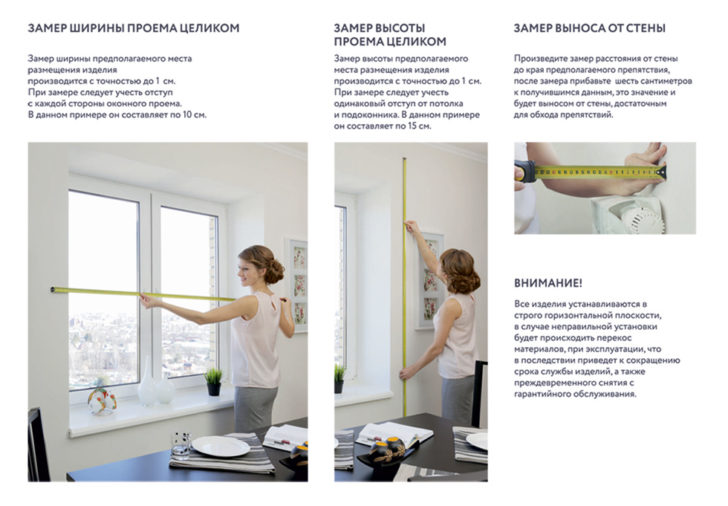
Do-it-yourself window measurements for sewing Roman blinds
You should focus not only on the parameters of the window, but also on the modification of a roll-type textile product. The layering of cascading and frameless models requires additional fabric length. Only classic models are sewn according to the size of window openings or sashes with the addition of minor allowances due to the absence of folds on the base.

An example of a roman blind pattern
Tiered curtains have about 6-10 folds. To correctly calculate the length of the fabric, taking into account the folds, you need to divide its parameter into 6, 7, 8, 9 or 10 identical parts. It all depends on the overall size of the product. Short curtains to the windowsill have an average of 6-7 folds, and long ones to the floor - 8-10. Models with a fold depth of 20-30 cm look organic. No need to make too many wavy draperies. This is contrary to their laconic image.
back to index ↑How to make Roman blinds with your own hands without sewing: a detailed master class
If obsolete blinds are still used to decorate window openings, then in order to update the familiar environment, it is important to modernize them. To do this, you will need small fabric cuts, a frame with lamellas, accessories and sewing tools:
- Adhesive tape;
- Fast drying adhesive;
- Meters (ruler and tape measure);
- Sharp scissors.
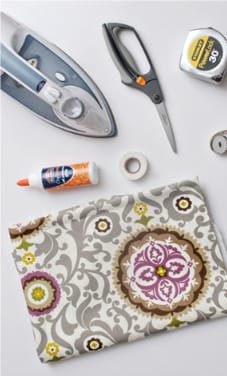
Prepare the necessary materials
Initially, you need to steam and iron the fabric well. When calculating the material, it is necessary to add 6 cm to the side seams, 10-15 cm to the upper and lower allowances to the window measurements. After marking, you should start working with the fabric:
- Using a ruler, cut perfectly evenly according to the markup. To process the edge, you need to bend 3 cm of fabric inside out on both sides.

Prepare the fabric according to your measurements
- Insert an adhesive tape with a width of no more than 2.5 cm into the fold and carefully iron along the entire length of the cut.
- Prepare slats. Remove the nylon threads responsible for adjusting the light output. They are next to the thicker cords that cause the rise and fall mechanism.
- Remove excess slats, focusing on the desired number of fabric folds. For example, with a total product length of 150 cm, it is advisable to leave 5 slats. After removing unnecessary strips, the structure should be assembled.
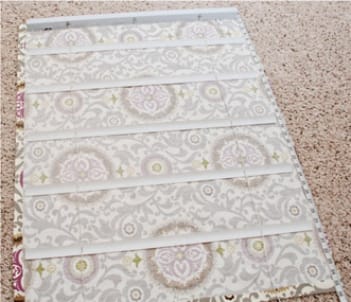
Prepare the required number of slats
- Glue the upper part of the fabric base to the cornice, bending its edge well.
- Evenly distribute and glue the lamellas along the entire length of the material, without catching the rope mechanism.

Glue the lamellas along the length of the material
- Using glue, fix the edge of the fabric on the volume bar, which acts as a weighting agent.
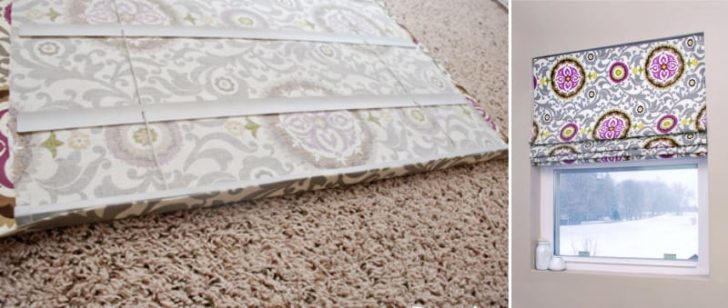
Fix the edge of the fabric on the volume bar
The end result will be to design the original Roman blind with your own hands. Photos of step-by-step instructions will clearly demonstrate each stage of creating an exclusive window decoration.
back to index ↑How to make a frameless Roman blind yourself
For admirers of lush draperies, there is an equally easy way to sew a roll-type light-shielding system. Frameless models in any position have a romantic pleating look, created by numerous folds of sagging fabric. The free position of the canvas is due to the absence of rigid slats.
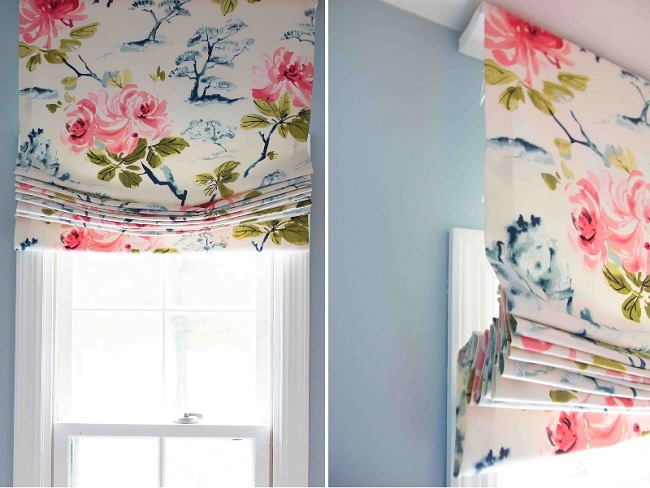
Frameless roman blind without hard slats
For needlework you will need:
- A piece of fabric with a length corresponding to the size of the window;
- Sewing machine;
- Narrow wooden slats and bars used as a cornice and framing from the underside;
- Stapler with volume staples;
- Lifting mechanism (rings and long cords with a nylon base);
- Tools for sewing and marking.
The sewing technology is extremely simple and understandable:
- Cut the fabric according to the measurements of the window.
- Finish the edges of the cut with a sewing machine.
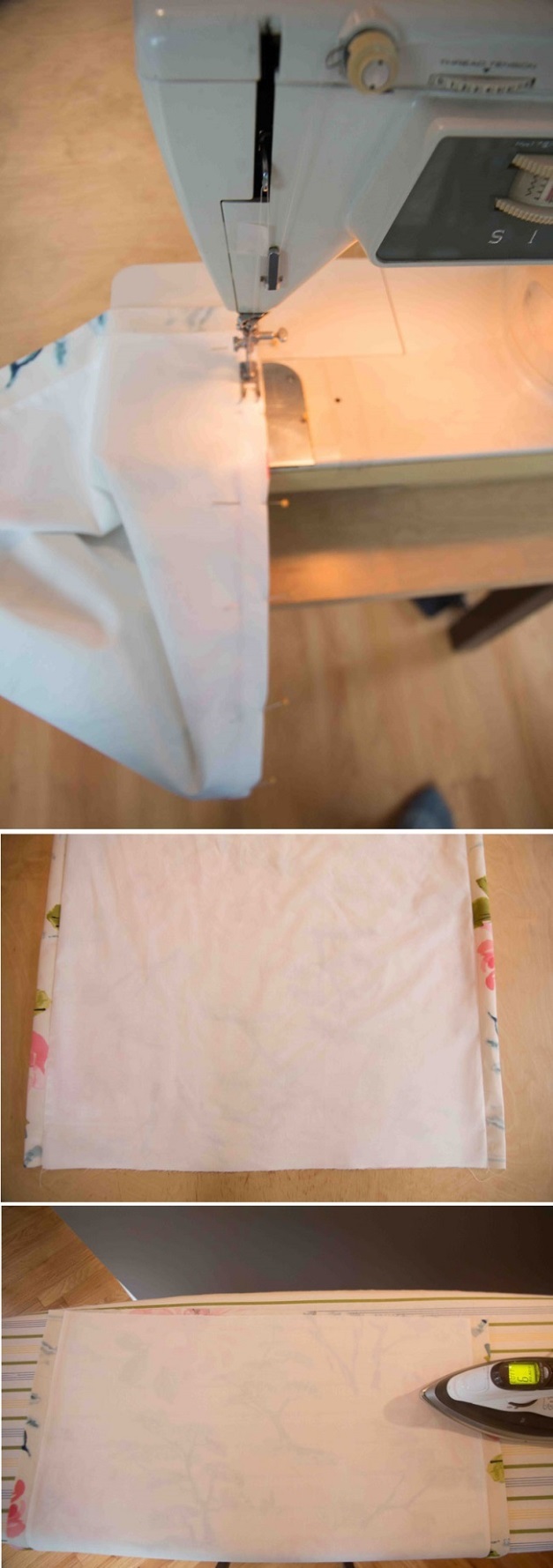
Edge processing
- From the wrong side, mark the installation sites of the rings on both sides. They are attached where the folds form.
- At a distance of 20 cm from the edge, make a drawstring (a closed-type pocket for installing a weighting agent in the form of a wooden lath).
- Wrap a wooden block with fabric.
- Using a stapler, attach the base of the product to the cornice bar.
- Sew polymer rings at the same distance from each other.
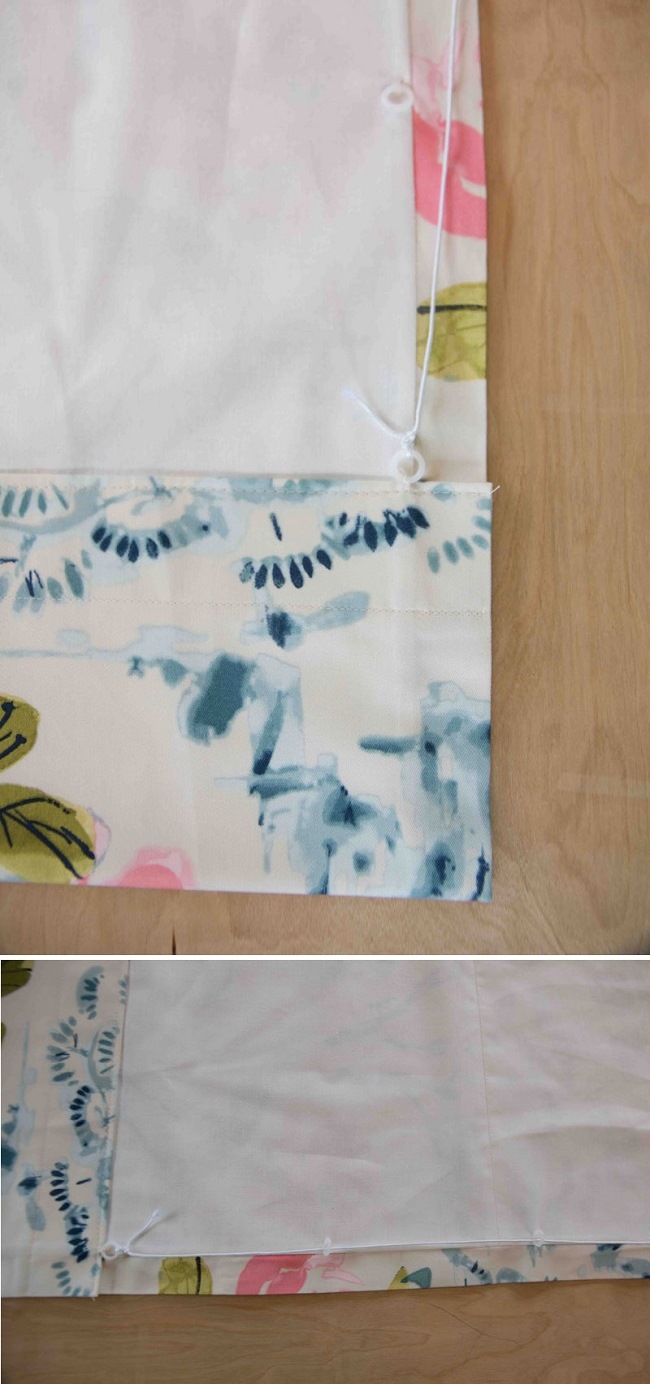
Sew rings around the edges of the fabric
- Install nylon cords at both ends.
- Carry out the installation of the cornice.
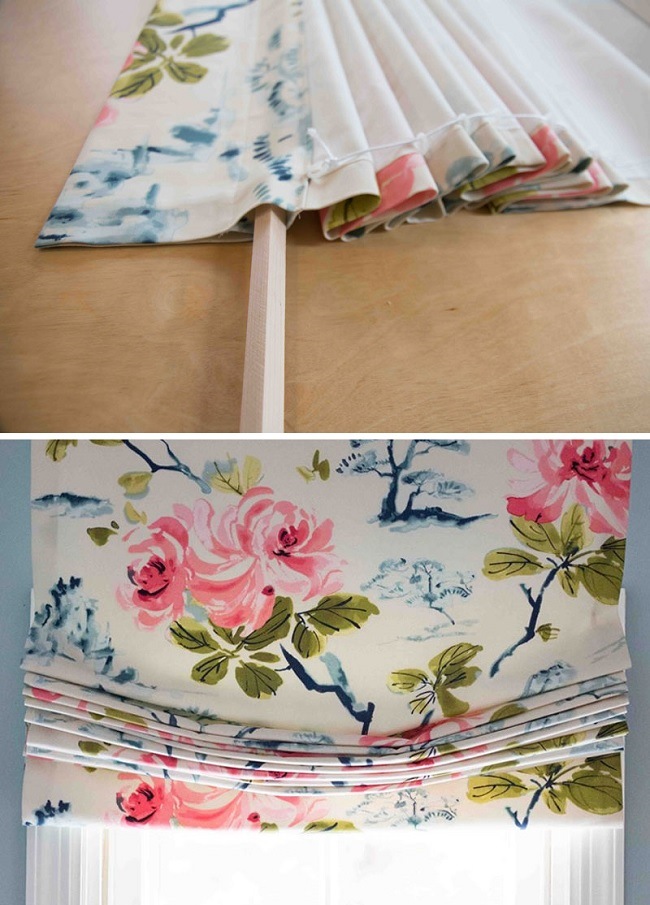
Install the weight in the drawstring
The subtleties of tailoring a Roman blind
Before creating an author's decoration for a window, it is important to familiarize yourself with the advice of skilled needlewomen who are fluent in sewing skills:
- If the fabric with the design you like is too thin, it is recommended to sew on a dense lining to improve the ability to shade the room.
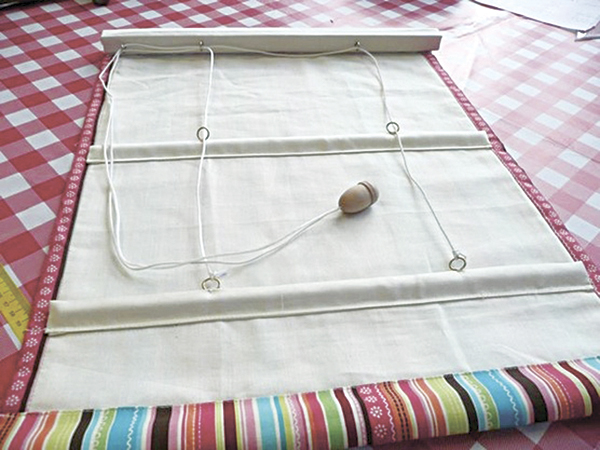
Dense lining to reinforce the fabric
- If the window opening has a disproportionate shape, then you must first make a pattern from a transparent film. This will avoid mistakes during the marking of the canvas.
- To facilitate the creation of proportional folds on the canvas, it is necessary to fold the fabric with an accordion, iron the bends or chop with pins.
- To fix the rings of the control mechanism, it is advisable to use nylon threads with a high degree of strength. The rings will constantly be under strong tension during the raising and lowering of the canvas. Therefore, the fastening threads must withstand the load.
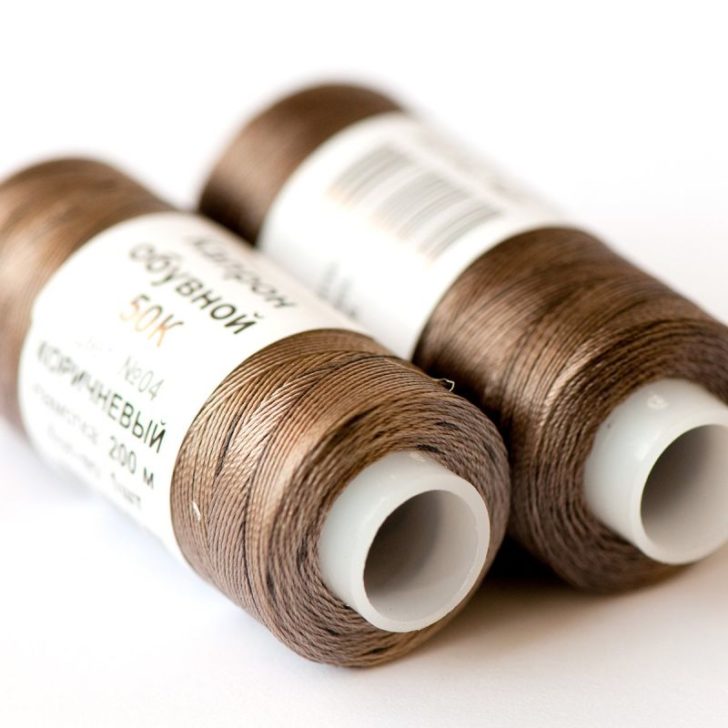
To secure the rings, use strong nylon threads.
- To enhance the effect of a voluminous and beautifully flowing drapery, you need to choose an airy-looking pleated. Its base can be made from fibers of linen, silk, cotton, chiffon and other fabrics. Preference should be given to exceptionally dense materials with excellent ability to retain their original color and shape for as long as possible.
Regardless of the design features, Roman blinds operate on the same principle: they gradually rise and fold due to manual or automated control. Remote control is due to the choice of a cornice with a built-in electric drive. This should be taken into account when choosing the optimal eaves.
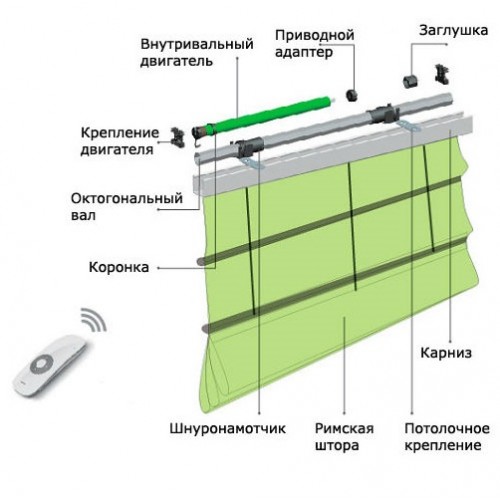
Eaves with built-in electric drive
How beautiful to decorate a Roman blind
So that the plain or perfectly even base of the roll-type system does not look too strict, it must be decorated with a variety of decorative elements:
- Satin ribbons, used as an edge trim or to create bows;
- Lacy knitted from acrylic threads or scallops made of beads;
- Straight frills or lush ruffles;
- Figured fringe;
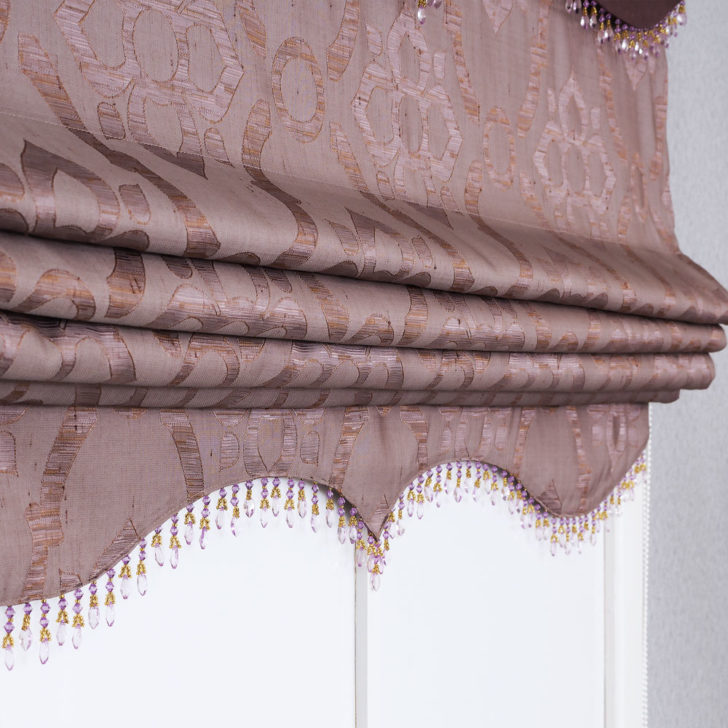
Roman blinds with fringe
- Brushes made of plain or multi-colored threads;
- Applications created from fabric or jewelry stones;
- Embroideries made of threads, beads, bugles or beads;
- Compositions of rhinestones or sequins;
- Fake locks, zippers, rivets or buttons.
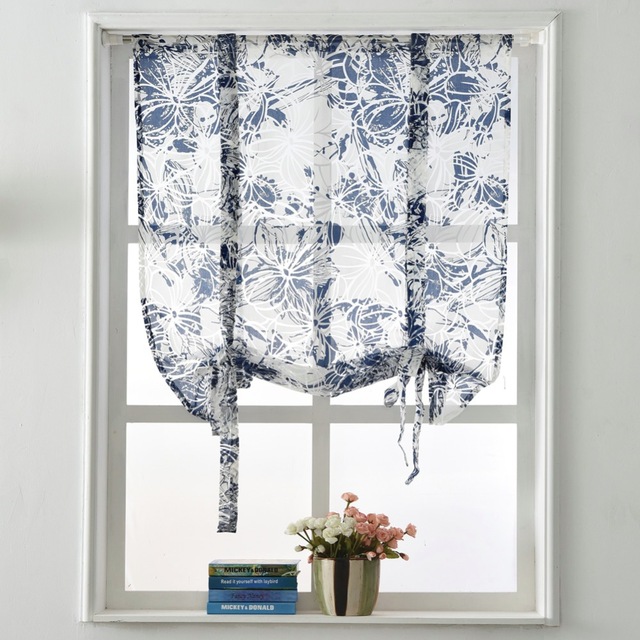
Decor of Roman curtains with ribbons
Spectacular-looking decorations are as easy to make yourself as it is to sew Roman blinds with your own hands. A photo showing step by step the algorithm for performing a beautiful finish on the side parts or the lower edge of the structure will allow you to make a filigree decor.
When choosing sewing accessories, it is important to determine the significance of window decoration against the general background of the room. Curtains can act as bright accent details or be used as a harmonious addition to textile decor.
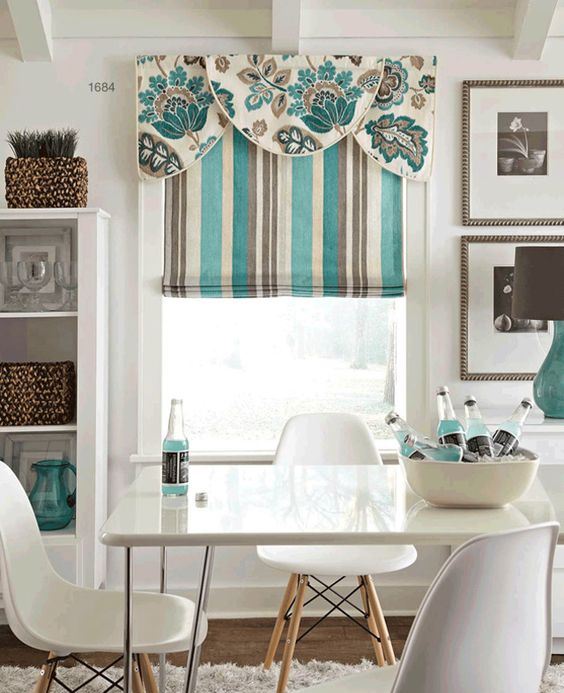
Roman blinds can act as bright accent details
Decorative elements, as well as the color of the fabric, should be selected taking into account a strictly accepted design decision and the chosen stylistic direction. Minimalism categorically does not welcome any decor of interior items, unlike boho, which is prone to saturating the room with multi-colored and unusual furnishings.
back to index ↑Weighty reasons for self-creation of roll-type curtains
Often, when developing an interior design project, professional decorators make unique furnishings with their own hands. This is easily explained by the desire of the designer to add a personal touch to the decoration of a certain space based on the aesthetic tastes and preferences of the owners of the house.
Homemade Roman blinds solve many design problems:
- Ideally suited to any size and non-standard shapes of windows.
- They maximize the visibility of the wall with window openings, which can act as an accent zone in the interior picture.
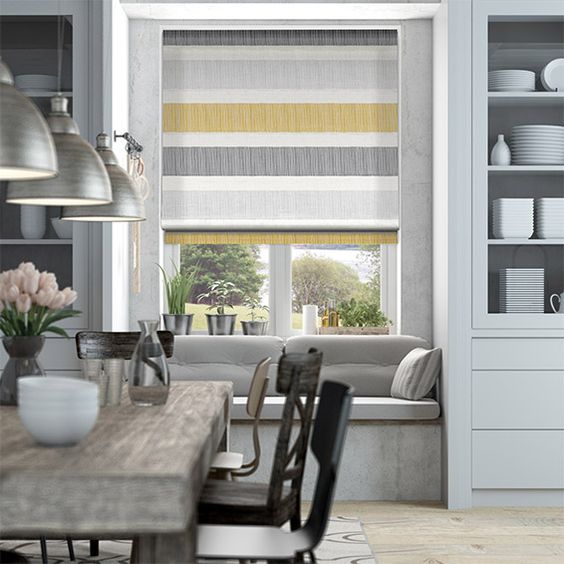
Roman blinds made by hand are perfect for your window
- They identically repeat the ornamentation of the surrounding furnishings - finishing materials, carpets, textile accessories, upholstery or furniture fronts.
- They create the author's decoration of window openings with products that exist in a single copy.
- They flawlessly copy the texture and texture of any materials that appeal to a certain stylistic concept. On fabrics, it is easiest to display the desired patterns, motifs, graphics in a classic or modern design.
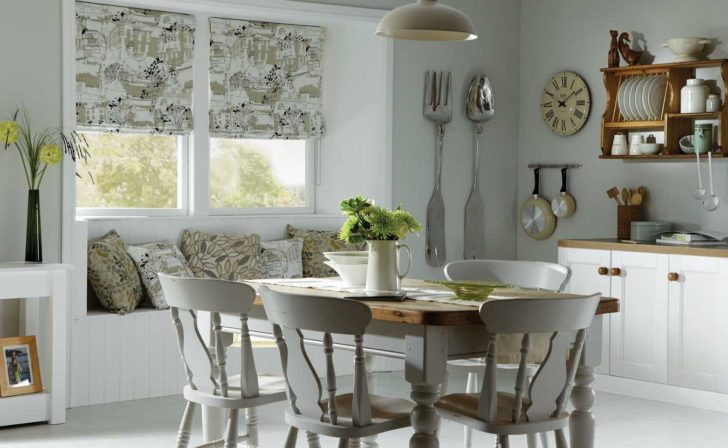
Roman blinds duplicate the textile decor of the interior
A creative approach to the development of a unique window design will allow you to create a spectacular looking picture of an interior with a memorable setting. Having mastered craft techniques, you can not only learn how to sew special Roman blinds, but also find a use for various junk items. Old blinds, bedspreads, tablecloths are best used for non-trivial window drapery.
The ability to make exclusive interior items opens up endless possibilities for modifying the appearance of the surrounding space. This will allow you to endlessly update the interior, saturating life with bright colors and charging you with a great mood. During a hot summer, a feeling of coolness can be created by decorating windows with Roman blinds depicting a waterfall or simulating an undulating sea. In times of severe frosts, it is easy to warm the surrounding space with models of bright sunny colors.
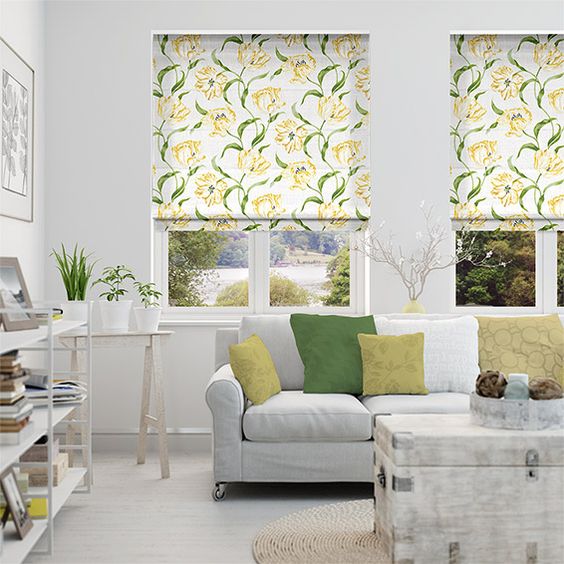
Roman blinds will help to easily transform the interior
Roman blinds reflect the canons of many stylistic concepts of ancient times and current trends in interior fashion. A laconic form in tandem with a fabric base that radiates warmth and creates comfort, allows you to harmoniously combine the rationalism of the interior with the aesthetics of a cozy home.Therefore, it is significant to embody creative ideas with the help of man-made window decor.
back to index ↑Photo gallery - do-it-yourself Roman curtains
Video
